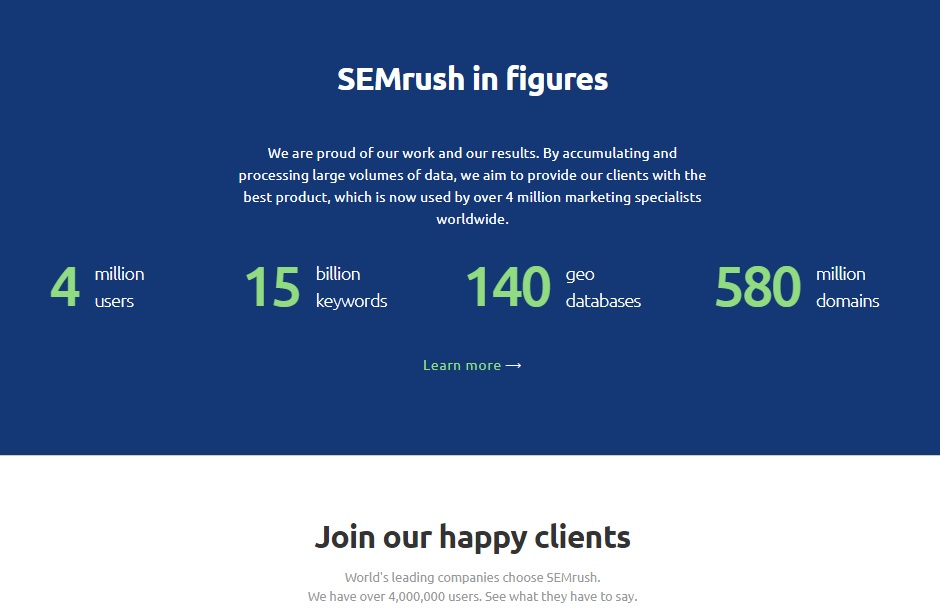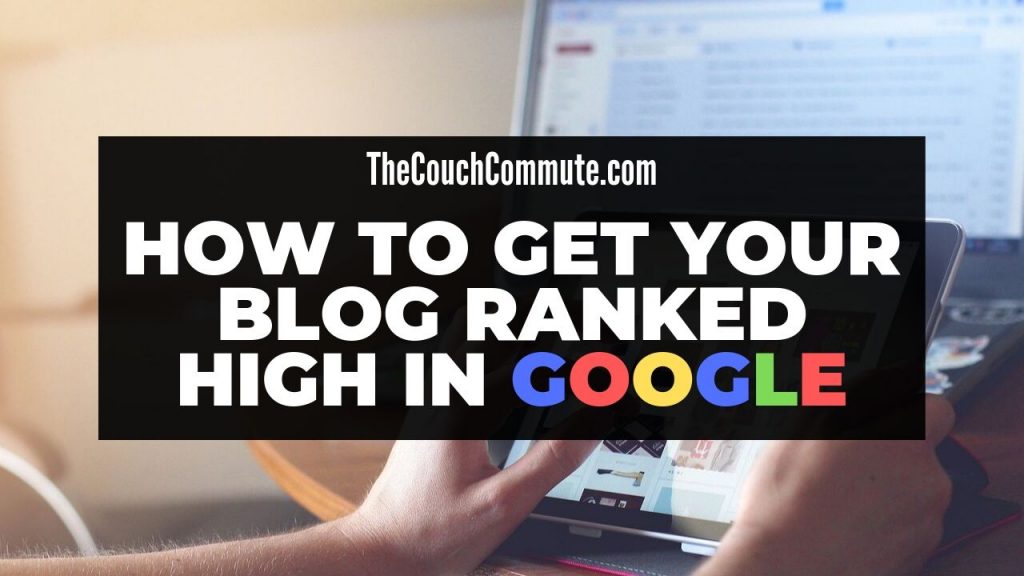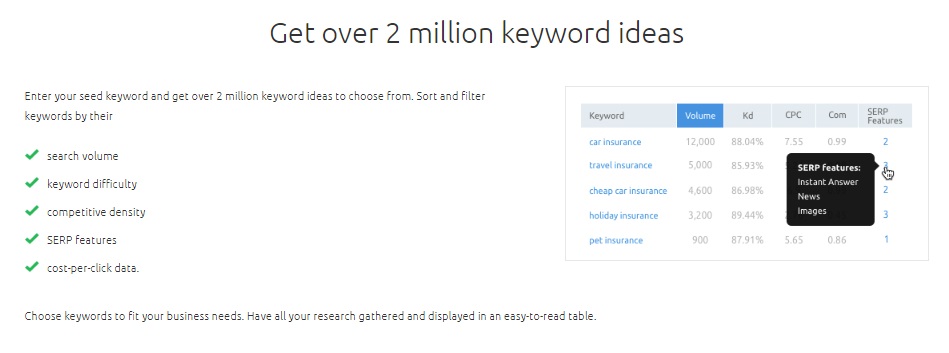Do you want more blog traffic? More visitors = more money. Get a 7 day free trial with SEMRush, the world’s number 1 SEO/SEM platform and use their optimization tools to skyrocket your blog traffic. With this tool and some basic knowledge, you’ll have everything you need to get ranked on Google. The Pro Plan is $99.99 a month and includes everything you need to build a successful blog marketing/blog SEO strategy. Perform SEO audits with ease, research keywords, discover backlink leads, research your competition and more.
Running a blog is tough, getting traffic to your blog is even harder. Rising above the noise and getting your content ranked in search engines can be a challenging task. Competition and search engines regularly changing their algorithms don’t help but there are plenty of things you can do to give your blog an edge and start getting ranked higher in search results.
First things first, if you aren’t using SEO tools to optimize blog content, you’re already a few steps behind. SEO suites help optimize your content and give your blog a fighting chance at being placed high in search engines so you can start generating organic traffic and making money off all your hard work.
I can’t stress enough, the importance of using a powerful SEO/SEM platform. New and small blogs are already at a huge disadvantage right out of the gate, so platforms like this allow us to compete with the big boys.

SEMRush is widely recognized as the best SEO tool suite on the market so I’ll leave a link to a 7-day free trial and I highly recommend you give it a try if you have goals of driving organic traffic and earning an income from your blog. It’s risk free and you can cancel at any time.
10 Simple SEO Tips for 2020
1. Pick the Right Keyword
Sounds easy enough, right? The first thing you want to do before writing content is to select a keyword or phrase you’re planning to target.

Let’s say you’re writing an article about “the best toys for toddlers”. You’ll want to do some research and find out precisely what people are searching for in relation to toddler toys.
To find this out you can use SEMRush to research keywords and get detailed metrics on how people are searching these keywords. You’ll be able to see how many searches per month each phrase receives and the competition for each individual keyword.
If you’re a smaller blog you’ll want to pick keywords with a high enough search rate to be relevant but low enough competition so that you can actually rank in search engines. Here is where you really start to see the importance of SEO tools. Without them, you’d have no way of knowing if you’re using the right keywords which will equate to a whole lot of wasted time and very little blog income.
2. Don’t Spam Keywords
Selecting the right keywords for your article is crucial. However, spamming those keywords over and over may have been a good strategy for getting ranked higher in search engines a few years ago, but now you’ll actually be penalized for doing this. This practice is known as keyword stuffing and it is frowned on by the almighty search engine algorithms.
3. Make Sure to Alt-Tag images
A simple yet effective way to enhance your organic traffic. Make certain all images in an article are alt-tagged with relevant keywords and phrases. If you’re using WordPress this can be done in the editing section of your media library.
4. Only Use Appropriate Headings
Keep your heading tag structure clean. Only use one H1 tag per article and make certain it contains your target keywords.
5. Link Blog Posts Internally
You have a blog filled with interesting content so make sure you link to your other relevant blog posts in each article.
Let’s say you’re writing an article about spending on a budget and have other articles about saving money and living frugally. Place links to these articles throughout your blog.
Every time you write new content you should be going back to link to it in older blog posts. Over time this will improve your on-page SEO score and as we all know, it’s the little things that matter.
Tip: Only link relevant content. For example, don’t link Making money online articles with tutorials or “howto” articles. Keep the focus narrow and refrain from linking to articles that deal with vastly different subject matter.
6. Keep URL’s Clean and Easy to Read
Not many people will click on your link if it appears untrustworthy. Make sure to keep your permalink structure clean and concise. Keep URL lengths under 75 characters.
Include keywords in your URL structure so people have a good idea about what they are clicking on.
Good URL Example: thecouchcommute.com/blogging/wordpress/guides – Contains information about the subject matter of the URL. Users will be more likely to click on a URL that looks like this over a URL that looks like the example below.
Bad URL Example: thecouchcommute.com/page3/4436 – Does not contain information about the subject matter and does not look legitimate.
7. Backlinks are Key
Content is king and will always be the most important part of any blog. If the articles you’re writing don’t contain useful or easy to digest content you’re not doing yourself any favors. However, even if you have some of the best content on the internet, you’ll still need other websites with high domain authority to be linking to your content.
When another website includes an internal link to your blog it’s known as a backlink. Google and other search engines place a high priority on these links and view them as a sign that a website contains trustworthy and useful information.
Not all backlinks are equal and this is another case where using SEO tools to conduct backlink audits of your competition can come in handy. If you are able to see what websites are linking to your competitor’s websites you’ll be able to reach out and try to obtain those same links. This can be a useful strategy and one that should help you gain some ground in search rankings.
This is the most challenging aspect of SEO, but also the most important.
8. Keep your Website Speedy
Avoid using too many plugins on your website. This will bog down performance and cause pages to load slower. Consider using a CDN (Content Delivery Network) and make sure you’re using a caching plugin. Following these steps will add a little extra zip to your blog which will increase your on page SEO score.
If your blog loads slow users are more likely to bounce off before reading your content. A high bounce rate can negatively affect your blog which spells bad news for your SEO.
9. Well Written Meta Descriptions
A meta description is the small block of text under a link that describes what the content is about. Make sure you are writing meta descriptions that are unique and concise to encourage more people to click on your link. Include target keywords in the meta description and write natural sentences that flow.

10. Don’t Give Up
Keeping motivated and persevering through adversity is what will set your blog up for long term success. Getting a blog ranking consistently high in search engines is a marathon. It can take years of hard work to propel your website onto the first page of internet search results. The only way you’re guaranteed to fail is if you give up. So, keep at it, take advantage of SEO suites like SEMRush and don’t stop writing quality content.


